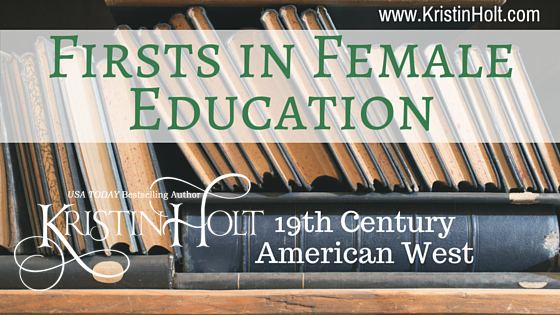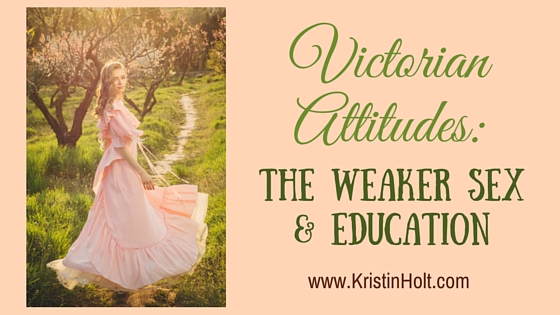
by Kristin Holt | Sep 11, 2015 | Articles
The Doctor Wore Petticoats speaks of 12 different physicians (two of them dentists), their stories, their reasons for pursuing a career in medicine, the school(s) attended, tales of their families (and marriages, many of which failed), and the communities they served. At a time in history when men and women alike adamantly opposed female doctors, the forces against these pioneers were tremendous. Each chapter’s biography illustrates characteristics of perseverance, determination, confidence, and a lifelong dream of making a difference. 5 stars!

by Kristin Holt | Aug 21, 2015 | Articles
Victorian attitudes, being what they were, separated the sexes. Women should be nurturers, mothers, wives, and homemakers. Men should be protectors, breadwinners, and if either partner in marriage were to engage in business or education, it would be he.
Many single women hoping to find a spouse between 1865 and 1869 attended college. Ambitious women enrolled in schools across the eastern portion of the states were seeking to become doctors, lawyers, and journalists. Unfortunately for these ladies, men viewed female college graduates as poor homemakers, and the few eligible bachelors around kept their distance from educated ladies.
~ Object: Matrimony, The Risky Business of Mail-Order Matchmaking on the Western Frontier, by Chris Enss, p 36

by Kristin Holt | Aug 15, 2015 | Articles
Our Victorian sisters worked tirelessly for equal rights in so many ways, including the right for an equal education and career choices. A list of 13 predominate FIRSTS in Female Education, 19th Century American West.

by Kristin Holt | Aug 12, 2015 | Articles
After reading one little segment (a “one-night stand”) within Richard Shenkman and Kurt Reiger’s One-Night Stands with American History: Odd, Amusing, and Little-Known Incidents. I have just one thing to say: I was born in the correct century. Maybe not as far as chivalry and honor among men go, but definitely as far as prevailing attitudes regarding education of females. I share one section of Shenkman and Reiger’s entertaining book, with two cited sources.
WOMEN ARE DUMBER
In the late 1800’s many physicians regarded increased female education as a primary factor in a general decline of female health. A woman’s brain was simply not capable of assimilating a great deal of academic instruction (and that’s just the beginning of the quote).

by Kristin Holt | Aug 6, 2015 | Articles
Frederick Henry Harvey recognized a need along the railway lines–good quality food, comfortable accommodations, and sterling service. He’d worked as a mail clerk on the railroad and discovering the unmet needs of travelers, opened his restaurant business in the 1870’s. By 1883, he replaced male waiters with young ladies whose impeccable appearance and gracious service increased Harvey’s business from local men. Courtships ensued (restricted to the “courting parlor” in the women’s dormitories), marriage occurred–but not until the minimum of one year of service to the company was met. Fred Harvey is credited with much more than quality food and entrepreneurship in the Southwest, he single-handedly brought about the civilizing of the west by importing more “brides” than any other “agency”.













